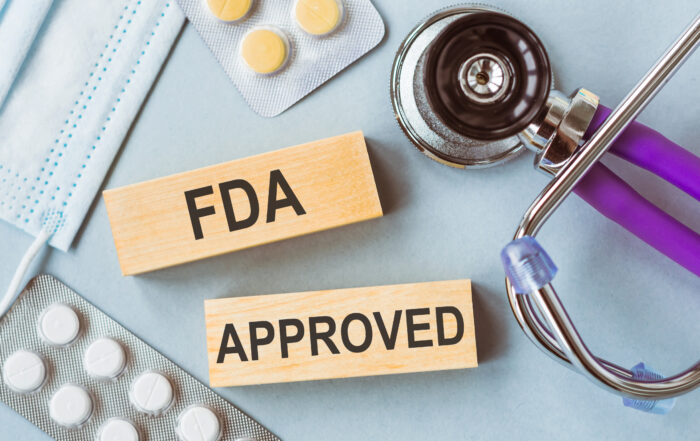
Risk Sharing Agreements in Brazil:
Bill No. 677/2021 proceeds slowly and without adjustments necessary for the legal certainty of the model
By Benny Spiewak & Guillermo Glassman
Incorporating new pharmaceutical technologies is one of the main challenges of the Unified Health System (“SUS”). Inspired by the model of the United Kingdom, the National Commission for the Incorporation of Technology in the SUS (“CONITEC”) has based the analysis of incorporation on the cost/effectiveness binomial. However, in many cases, there is uncertainty about the advantage of replacing technologies due to the need for more sufficient data, which delays patient access to these treatments through regular channels of public pharmaceutical assistance. This encourages the judicialization of the matter by patients who want access to more modern medicines.
As an alternative to accelerate access to new treatments, Bill No. 677/2021 (PL 677) of the Chamber of Deputies seeks to bring the Risk Sharing Agreements to Brazil, institutionalizing a pilot project of the Ministry of Health (“MS”) that was initiated in 2019, even without specific legal provisions. If adequately structured in law, the model may result in significant advancement of the matter. Nevertheless, Bill 677 has been proceeding slowly. The Health Commission ended its analysis without the necessary amendments needed to give it legal certainty.
The right to healthcare in Brazil, guaranteed by the Constitution as a duty of the State (article 196), is comprehensive and can be analyzed from two perspectives. It is a universal, egalitarian, and accessible right in the horizontal dimension, because promoting health equity is considered an inherent duty of the State. The SUS is its practical implementation of healthcare for everyone who is in Brazil. In the vertical dimension, full service is guaranteed (CF, article 198, II) by dispensing medicines and products of interest to health and offering therapeutic procedures, in accordance with Law no. 8080/90, article 6, I, “d,” article 7, II and article 19-M, I and II.
The SUS’s central political and economic tensions are concentrated in the vertical dimension. On the one hand, the understanding that comprehensiveness encompasses actions for prevention, promotion, and recovery of health in primary, secondary, and tertiary healthcare, pharmaceutical assistance, and recovery and rehabilitation services is undisputed. On the other hand, strictly which medicines and treatments should be regularly provided to patients is a stormy issue, which can be seen, for example, by the judicialization of public health.[1]
There are three main political aspects to consider in incorporating technologies and treatments within the scope of the SUS.
The State should consider budgetary constraints and the scale of the system. However, patients, who are often represented by actively engaged patient associations, want access to the most advanced technologies and treatments to treat their health and well-being. In addition, the health industry expects full access to the public market for its entire portfolio.
The first measure to mediate tensions in the incorporation of technologies and treatments within the scope of the SUS was the creation of the Commission for the Incorporation of Technologies (“CITEC”) in the MS in 2006, which, in 2008, became part of the structure of the Secretariat of Science, Technology and Strategic Inputs (“SCTIE”).[2] The agency had as its primary duty (Ordinance No. 2587/08, article 5) the incorporation or removal of health products from the list of SUS procedures and the list of the National Supplementary Health Agency (“ANS”).
This decision was made after reviewing clinical guidelines and therapeutic and healthcare protocols (later called Clinical Protocols and Therapeutic Guidelines (“PCDT”) under article 19-N, II of Law No. 8080/90). Within the scope of the SUS, such documents established criteria for the diagnosis and treatment of drugs, specifying the products to be prescribed and dispensed to patients in each case. In 2011, Law No. 12401 (which included articles 19-M to 19-U in Law No. 8080/90) created the CONITEC (inspired by the National Institute for Health and Clinical Excellence (“NICE”)), which became responsible for advising the Ministry of Health in the attributions related to the incorporation of technologies by the SUS (consolidated, in the case of pharmaceuticals, in the National List of Essential Medicines (“RENAME”) under Decree No. 7508/11 and Ordinance No. 533/12) and in the amendment of the PCDT.
More recently in 2019, through Ordinance No. 1297, the MS experimentally adopted a modern technology incorporation model, the Risk Sharing Agreement (“RSA”). As in other occasions, such as in the case of the Partnerships for the Productive Development of Medicines (“PDP”[3]), the MS established unprecedented modeling in Brazil from legal instruments already known. In this case, there was uncertainty regarding the cost/effectiveness, estimated consumption, and budgetary impact of the adoption of the drug Spinraza (nusinersen) for the treatment of Spinal Muscular Atrophy (SMA 5q) Types II and III within the scope of the SUS (such medication was dispensed by the public system only to Type I patients). The goal of the RSA was to evaluate in natural conditions the effects of the incorporation of the drug, having as a contribution of the manufacturer the reduction of its price and the assumption of unforeseen additional costs if the number of patients served exceeded the maximum expected based on the available epidemiological data.
Regardless of the specific outcome of the Spinraza case, it is necessary to evaluate the convenience of the RSA model to manage the incorporation of technologies into the SUS—and not only for very high-cost drugs. It’s expected that more advanced treatments in the pharmaceutical industry will emerge, increasingly complex and with multiple uses (as seen in the case of new biological drugs), and for major health disorders society may not always be willing to wait for an exact understanding of the cost-effectiveness advantages of these new products and new uses.
And while there is no regular incorporation by the public network, patients resort to judicialization, compromising the public budget more intensely. In this context, Bill No. 677/2021 stands out, intending to increase the legal status of the RSA model in Brazil.
Providing the RSAs in law is fundamental to giving them legal certainty. Indeed, the RSAs exempt the general duty to bid for the acquisition of medicines, and the targeting of part of the public demand for this procurement modality restricts the access of other interested parties in the supply of treatment alternatives. As in the case of PDPs, the broader adoption of RSAs without express legal basis may lead to perplexity in the administrative law community (especially Accounting Courts). The existence of specific legal rules with the definition of clear guidelines for using RSAs can help alleviate this problem.
The establishment of a new model for the incorporation of technology into the SUS, accelerating the population’s access to new treatments, requiring contributions from the industry, and avoiding the costs of health judicialization, is in line with the spirit of Law No. 14133/21, which is the New Law on Biding Processes and Contracts (“NLLC”). However, Bill 677 needs enhancements. Therefore, the processing of Bill 677 by the Health Committee of the Chamber of Deputies (ended on July 4, 2023) without the submission of amendments is surprising. This contradicts the relevance of the issue.
In this regard, the law regulating RSAs in Brazil should seek to define more precise procurement parameters to reduce the legal uncertainty for public managers and companies without consolidated precedents on new public procurement models. The following are aspects requiring specific legal treatment: 1) form of a selection of the private partner and possible division of the public market, if there are multiple interested parties; 2) maximum term of the partnership; 3) minimum discount applicable during the RSA and the reference price for discount (e.g., average prices charged in the market, the latest acquisition of the MS or PMVG); 4) definition of RSA phases; 5) methods of evaluating the advantage of the incorporation in light of the performance of the RSA; 6) deadlines for making the treatment available after the execution of the RSA, supply schedule, and the possibility of applying penalties in the event of non-compliance; 7) possibility of centralization of SUS demand (as occurs in the case of PDPs) to obtain more significant discounts; 8) rules for defining the percentage of SUS demand allocated to the RSA; and 9) the possibility of demanding technological contributions (transfer of technology to public laboratories).
After the excellent visibility and momentum that the procurement model via RSA gained in 2019, 2020, and 2021 with the creation of the MS pilot project, discussions on the topic have decreased. Still, the problems that the RSA intends to solve remain present. The end of the analysis of Bill 677 by the Health Committee of the Chamber of Deputies without proposing (necessary) amendments points to a slow process and the rejection of the bill or its passing in a version with rules below those necessary for the effective and safe implementation of this alternative for the incorporation of technologies into the SUS. Therefore, it is a good moment for civil society, especially patient associations, and industry to move politically to breathe new life into Bill 677, with the necessary critical reflection on the current state of the text.
[1]For a historical, quantitative analysis of the evolution of the judicialization of public health, see Fabíola Sulpino Vieira, Direito à saúde no Brasil: seus contornos, judicialização e a necessidade de macrojustiça. Brasilia: IPEA, 25–47 (2020).
[2]Fernando Aith, Yasmim Bujdoso, Paulo Roberto do Nascimento & Sueli Gandolfi Dallari. Os princípios da universalidade e integralidade do SUS sob a perspectiva da política de doenças raras e da incorporação tecnológica. Revista de Direito Sanitária, 15(1), 10–39 (2014).
[3]On this topic, see Guillermo Glassman. Parcerias para o Desenvolvimento Produtivo de Medicamentos. Londrina: Thoth, 75–80 (2021).
Update Magazine
Winter 2023

 BENNY SPIEWAK is Managing Partner and head of the IP and Life Science desks, SPLaw Brazil.
BENNY SPIEWAK is Managing Partner and head of the IP and Life Science desks, SPLaw Brazil. GUILLERMO GLASSMAN is Partner and head of the Life Science Litigation and Procurement desks, SPLaw Brazil.
GUILLERMO GLASSMAN is Partner and head of the Life Science Litigation and Procurement desks, SPLaw Brazil.




